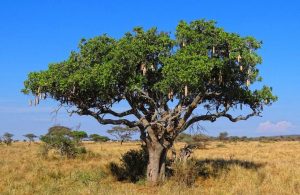The speed with which they spread, the lack of management preparation and the possibility of a “second wave”.
Billions of locusts attacked the fields of Africa and Asia while, in parallel, Covid-19 reaped a harvest of victims all over the world. The similarities between the two phenomena are impressive. We may start with the speed with which they spread.
The exponential increase in the numbers of insects, by as much as a factor of twenty for every generation, reminds us of the rapidity of coronavirus infection which, in the initial phase, may double the number of cases in an area in a matter of days. A second element common to both plagues is the lack of management preparation.
The African countries have had to face the invasion of locusts without any organisation or means to defend themselves, as happened in the case of the virus in many European, and North and South American countries. It is like fighting a fire with no water, notes Keith Cressman, head of locust prevention at the Food and Agriculture Organization (FAO). The World Health Organisation spoke in similar terms concerning the need to be prepared to fight the virus.
The third similarity refers to the possibility of a “second wave”. In both cases, this could occur in the autumn. Lastly, it must be noted that, to counteract the plague of locusts, international coordination is required, exactly as is required to combat Covid-19.
But what brought about this exceptional invasion of locusts? Climate change has had an important role in this, with the unusual warming of the western part of the Indian Ocean with respect to the eastern part.
This phenomenon, the dipole of the Indian Ocean, is often referred to as the Indian Niño for its similarities with its Pacific counterpart. In 2019 it reached an intensity not seen for decades with torrential rains in eastern Africa and in India that obliged hundreds of thousands of people to abandon their homes.
When the waters subsided, vegetation flourished and this allowed the locusts, which are used to living in dry areas, to multiply explosively, changing colour, form and even their usually solitary behaviour. This resulted in the devastation of the lands, bringing hunger to whole populations.






